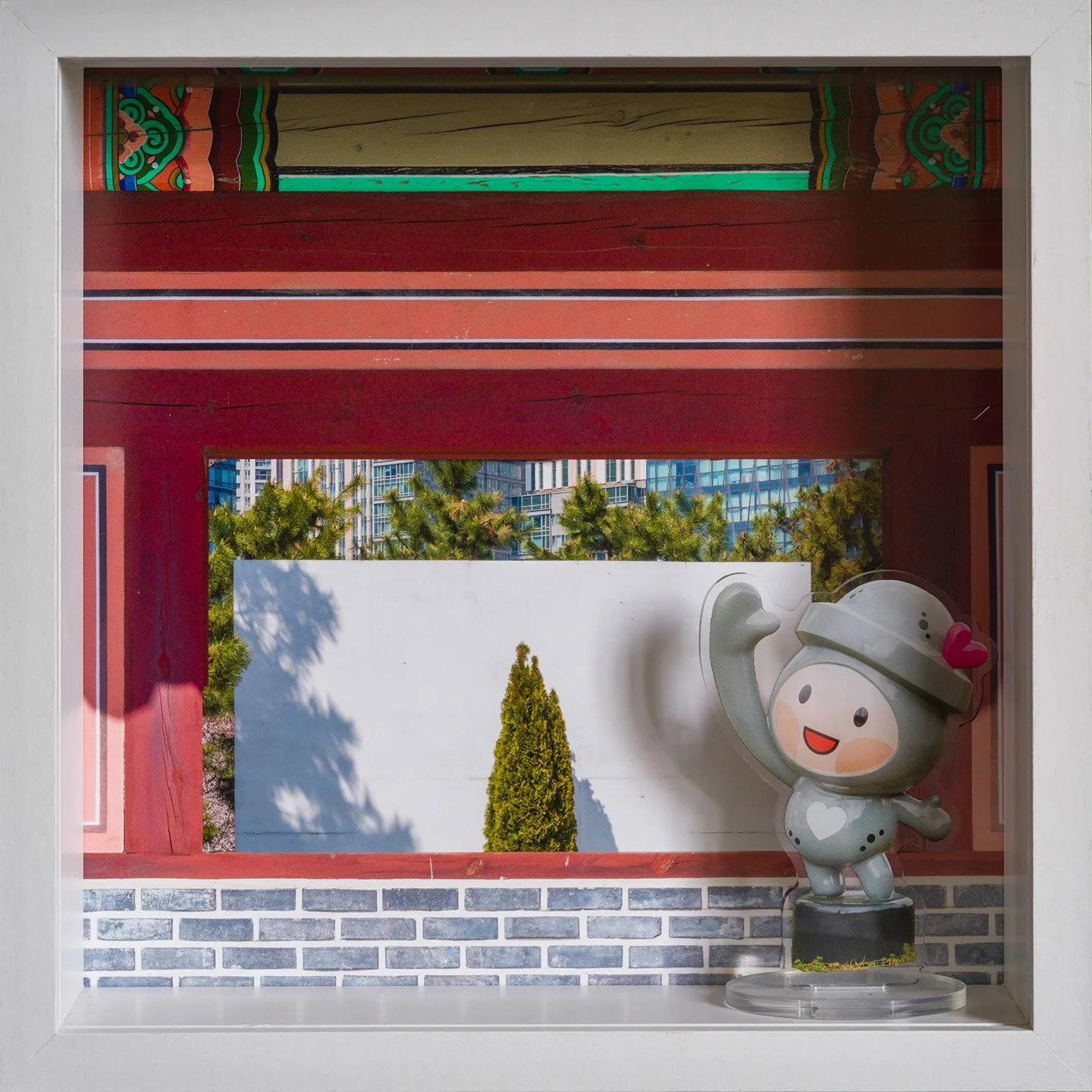PLEASE COME IN/eoSEO OSAEYO





























I have watched 450 Korean dramas, and I have probably cried at some point during every one. Perhaps more amazing to me than my somewhat embarrassing admission, is the fact that I am Far from alone. Since a democratic South Korea opened itself to a global market in the late 1980s, South Korean popular culture has taken the world by storm. K-pop, Kdramas, Kbeauty, Korean cars and electronics, have become massively popular worldwide. Though initially drawn in by the dramas, South Korea quickly grabbed a hold of me more broadly, sucking me into an ever growing love. Please Come In is an invitation to experience this seductive pull. It is rooted in my experience of how South Koreans create and respect community, communal pleasure, and a shared emotional experience - which for me stands in stark contrast to the fragmented, individual-centered tendencies at the heart of current American culture.
Visit Seoul, and multilingual signs inform the visitor of social expectations. “Quiet. Residential neighborhood.” The request is sweetly delivered by a smiling cartoon-like figure. "Hanbok. RentMe." reads another in front of a shop renting traditional Korean attire. These messages serve as an invitation to partake in what it means to be Korean. In contrast to the rigorous nature of Korean beauty standards or the competitive work and school environment, the rough-hewn and flawed nature of the city itself suggests that you can enjoy smaller pleasures, feel safe and welcome, without a need for perfection. A delicious meal can be found at a restaurant or the convenience store. Korean cities are a study in balancing seemingly contradictory values.
These shadow boxes serve as an entry into the cities of Korea as I experience them, old and new, imperfect yet alive and inviting. The setting is a composite of two images to convey this duality - one which reflects the tradition, living history, and often remnants of a more impoverished era, the other, Korea's more modern, technology driven, and international face. Standing in each box is an acrylic figure referencing one of three phenomena found widely on the streets of South Korea - individuals dressed in Hanbok, mascots (everything in South Korea seems to have a mascot - cities, the police, the metro, banks, temples), and images of idols and actors being celebrated and selling absolutely everything. The symbols themselves have a warm vibe, but beyond that, the ability to recognize these symbols initiates both the person on the street and the viewer of this work into the club of those in the know. The acrylic figures in each work - inexpensive collectible items - offer a bridge by which the viewer can join the In-crowd and enjoy the warmth of belonging. They offer community. In American politics, life is often presented as a zero sum game. You can't give to one without taking from another. I offer these shadow boxes as a challenge and a question. Can we find a way to cherish community and the individual simultaneously? Can we value both the child and the adult?
